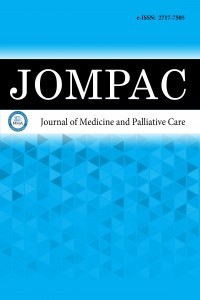1.
Fernandez-Montequin JI, Valenzuela-Silva CM, Gonzalez DiazO, et al. For the Cuban Diabetic Foot Study Group. Intra-lesional injections of recombinant human epidermal growthfactor promote granulation and healing in advanced diabeticfoot ulcers: multicenter, randomised, placebo-controlled, double-blind study. Int Wound J. 2009;6:432-443
2.
Berlanga-Acosta J. Diabetic lower extremity wounds: the rationalefor growth factors-based infiltration treatment. Int Wound J.2011;8(6):612-620. doi:10.1111/j.1742-481X.2011.00840.x
3.
Valenzuela-Silva CM, Tuero-Iglesias ÁD, García-Iglesias E, et al.Granulation response and partial wound closure predict healingin clinical trials on advanced diabetes foot ulcers treated withrecombinant human epidermal growth factor. Diabetes Care.2013;36(2):210-215. doi:10.2337/dc12-1323
4.
Tsang MW, Wong WK, Hung CS, et al. Human epidermal growthfactor enhances healing of diabetic foot ulcers. Diabetes Care.2003;26(6):1856-1861. doi:10.2337/diacare.26.6.1856
5.
Gomez-Villa R, Aguilar-Rebolledo F, Lozano-Platonoff A, et al.Efficacy of intralesional recombinant human epidermal growthfactor in diabetic foot ulcers in Mexican patients: a randomizeddouble-blinded controlled trial. Wound Repair Regen. 2014;22(4):497-503. doi:10.1111/wrr.12187
6.
Singla S, Garg R, Kumar A, Gill C. Efficacy of topical applicationof beta urogastrone (recombinant human epidermal growthfactor) in Wagner’s grade 1 and 2 diabetic foot ulcers: comparativeanalysis of 50 patients. J Nat Sci Biol Med. 2014;5(2):273-277.doi:10.4103/0976-9668.136160
7.
Park KH, Han SH, Hong JP, et al. Topical epidermal growth factorspray for the treatment of chronic diabetic foot ulcers: a phaseIII multicenter, double-blind, randomized, placebo-controlledtrial. Diabetes Res Clin Pract. 2018;142:335-344. doi:10.1016/j.diabres.2018.06.002
8.
Yang S, Geng Z, Ma K, Sun X, Fu X. Efficacy of topical recombinanthuman epidermal growth factor for treatment of diabetic footulcer: a systematic review and meta-analysis. Int J Low ExtremWounds. 2016;15(2):120-125. doi:10.1177/1534734616645444
9.
Yang S, Geng Z, Ma K, Sun X, Fu X. Efficacy of topical recombinanthuman epidermal growth factor for treatment of diabetic footulcer: a systematic review and meta-analysis. Int J Low ExtremWounds. 2016;15(2):120-125. doi:10.1177/1534734616645444
10.
Basu S, Yoffe P, Hills N, Lustig RH. The relationship of sugar topopulation-level diabetes prevalence: an econometric analysisof repeated cross-sectional data. PLoS One. 2013;8(2):e57873.doi:10.1371/journal.pone.0057873
11.
Singh N, Armstrong DG, Lipsky BA. Preventing foot ulcers inpatients with diabetes. JAMA. 2005;293(2):217-228. doi:10.1001/jama.293.2.217
12.
Moxey PW, Gogalniceanu P, Hinchliffe RJ, et al. Lower extremityamputations--a review of global variability in incidence. DiabetMed. 2011;28(10):1144-1153. doi:10.1111/j.1464-5491.2011.03279.x
13.
Bakker K, van Houtum WH, Riley PC. 2005: The InternationalDiabetes Federation focuses on the diabetic foot. Curr Diab Rep.2005;5(6):436-440. doi:10.1007/s11892-005-0051-y
14.
Steed DL, Attinger C, Colaizzi T, et al. Guidelines for the treatmentof diabetic ulcers. Wound Repair Regen. 2006;14(6):680-692.doi:10.1111/j.1524-475X.2006.00176.x
15.
Buchberger B, Follmann M, Freyer D, Huppertz H, EhmA, Wasem J. The evidence for the use of growth factors andactive skin substitutes for the treatment of non-infecteddiabetic foot ulcers (DFU): a health technology assessment(HTA). Exp Clin Endocrinol Diabetes. 2011;119(8):472-479.doi:10.1055/s-0031-1279713
16.
Agudelo-Suárez AA, Ruiz-Cantero MT, González-Zapata LI,Restrepo-Medrano JC, Ortiz-Barreda GM. The parliamentary politicalagenda: a tool for policy analysis of diabetes priorities in Spain. GacSanit. 2012;26(6):554-559. doi:10.1016/j.gaceta.2012.03.002
17.
Whiting DR, Guariguata L, Weil C, Shaw J. IDF diabetes atlas:global estimates of the prevalence of diabetes for 2011 and 2030.Diabet Res Clin Pract. 2011;94(3):311-321.
18.
Berlanga-Acosta J, Fernández-Montequín J, Valdés-Pérez C, etal. Diabetic foot ulcers and epidermal growth factor: revisitingthe local delivery route for a successful outcome. Biomed Res Int.2017;2017:2923759. doi:10.1155/2017/2923759
19.
Singla S, Singla S, Kumar A, Singla M. Role of epidermalgrowth factor in healing of diabetic foot ulcers. Indian J Surg.2012;74(6):451-455. doi:10.1007/s12262-012-0447-2
20.
Fernández-Montequín JI, Infante-Cristiá E, Valenzuela-Silva C,et al. Intralesional injections of Citoprot-P (recombinant humanepidermal growth factor) in advanced diabetic foot ulcers withrisk of amputation. Int Wound J. 2007;4(4):333-343. doi:10.1111/j.1742-481X.2007.00344.x
21.
Fernández-Montequín JI, Betancourt BY, Leyva-Gonzalez G,et al. Intralesional administration of epidermal growth factor-based formulation (Heberprot-P) in chronic diabetic footulcer: treatment up to complete wound closure. Int Wound J.2009;6(1):67-72. doi:10.1111/j.1742-481X.2008.00561.x
22.
Velázquez W, Valles A, Curbelo W. Impacto del Heberprot-Pen el tratamiento de las úlceras del pie diabético. BiotecnologíaAplicada. 2010;27(2):136-141.
23.
Yera-Alos IB, Alonso-Carbonell L, Valenzuela-Silva CM, etal. Active post-marketing surveillance of the intralesionaladministration of human recombinant epidermal growth factorin diabetic foot ulcers. BMC Pharmacol Toxicol. 2013;14:44.doi:10.1186/2050-6511-14-44
24.
González Acosta S, Calaña González Posada B, Marrero RodríguezI, López Fernández R. Evolución clínica del tratamiento en el piediabético con Heberprot-P o con el método convencional. RevCubana Angiología y Cirugía Vascular. 2011;11(2):11.
25.
Berlanga J, Fernández JI, López E, et al. Heberprot-P: a novelproduct for treating advanced diabetic foot ulcer. MEDICC Rev.2013;15(1):11-15. doi:10.37757/MR2013V15.N1.4
26.
Valenzuela-Silva CM, Tuero-Iglesias ÁD, García-Iglesias E, et al.Granulation response and partial wound closure predict healingin clinical trials on advanced diabetes foot ulcers treated withrecombinant human epidermal growth factor. Diabetes Care.2013;36(2):210-215. doi:10.2337/dc12-1323
27.
Gomez-Villa R, Aguilar-Rebolledo F, Lozano-Platonoff A, et al.Efficacy of intralesional recombinant human epidermal growthfactor in diabetic foot ulcers in Mexican patients: a randomizeddouble-blinded controlled trial. Wound Repair Regen.2014;22(4):497-503. doi:10.1111/wrr.12187
28.
Acosta JB, Savigne W, Valdez C, et al. Epidermal growth factorintralesional infiltrations can prevent amputation in patients withadvanced diabetic foot wounds. Int Wound J. 2006;3(3):232-239.doi:10.1111/j.1742-481X.2006.00237.x

